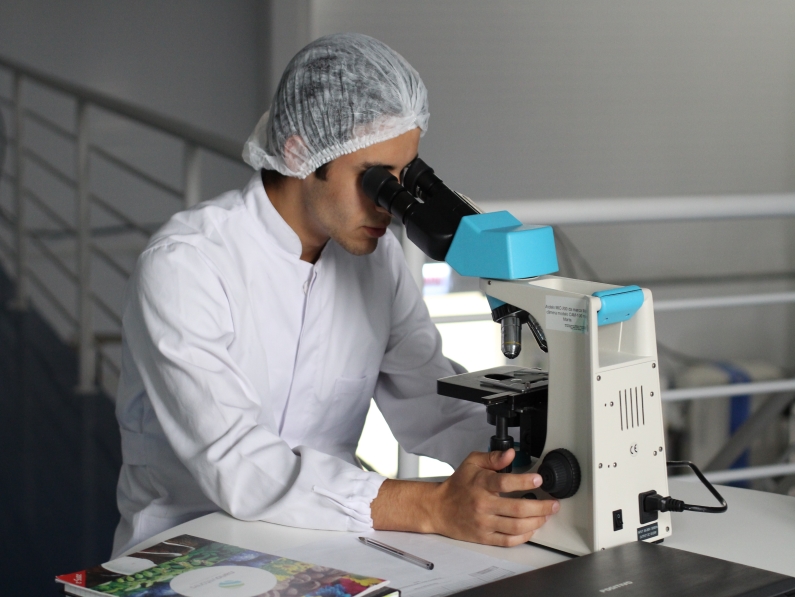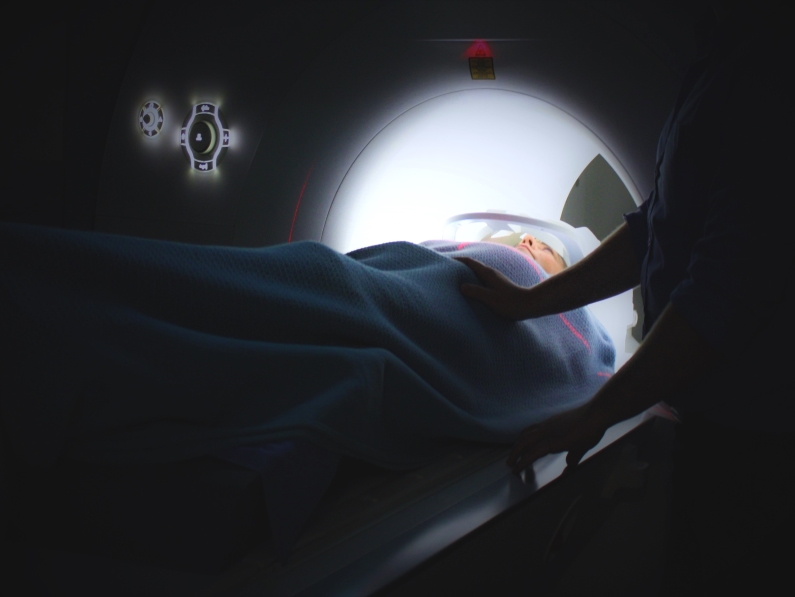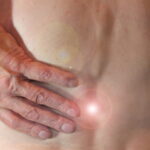Cancer is the second leading cause of death in the United States and one of the deadliest diseases in the world. While the healthcare and pharmaceutical industries have spent billions of dollars in research and medicine, there is no cure. But while there is no cure, researchers have identified the ones with increased risks.
Aside from implementing the best strategies of prevention like a healthy diet and exercise, screening for these cancers can potentially make a difference between life and death.
How does the healthcare industry screen people and how does it have an impact? And how do we know that screening matters if our DNA has destined us for genetic destruction?
Screening for cancer simply means blood and imaging tests, self-exams, genetic screening, and doctor exams.
Let’s take a look at the ones that we can screen for, how to do it, and why it’s essential.

Breast Cancer
Aside from skin, breast cancer is the most common that specialists diagnose women with. Although it happens to all ages of women, its riskier as we get older. The absolute best defense is to screen for it as early as possible. The medical field deems this early detection.
According to the American Society of Clinical Oncology, women should get mammograms around age 40, but with a family history of breast cancer, the earlier the better. The American Cancer Society provides a range instead of an age:
- Women age 40 to 44 – annual breast cancer screening with mammograms
- Age 45 to 54 annual mammograms
- Age 55+ mammograms every 2 years OR yearly screening
How a Mammogram Works
Doctors will use a machine that flattens the breast in order to get a good high quality picture. A radiologist will use a machine that takes an x-ray (at a lower dose) of the two breasts. Since the x-rays don’t penetrate the tissue very easily, 2 plates that compress or flatten the breast will spread the tissue apart.
Any areas of white, high-density tissue will be studied, along with its size and shape. Tumors show up as these white areas, and the patterns will be focused on for any signs of cancer.
Self-Exam
At home at any time, women can perform a self-exam by placing a pillow under the right shoulder and the right arm behind the head. Using the left hand, massage in circular motions around the right breast area and armpit. One should do this with light pressure and then firm pressure, while checking for lumps.
Colon Cancer
Doctors diagnose 39% of people at the early stage of colorectal cancer, which has a survival rate of 5 years. Once its spread, that number has a survival rate of 67% for rectal cancer, but drops to 14% for colon.
Screening greatly reduces one’s chance of dying from this disease. And the best way to do that is by identifying polyps in the colon or rectum, or identifying symptoms of inflammatory bowel disease. Of course just like any other disease, being overweight, eating a high-fat diet, and smoking can increase risks.
Since this disease begins with a polyp most of the time – and testing for them can save lives.
The American Cancer Society recommends screening around age 45, via the following methods and schedules:
- Annual fecal immunochemical test OR annual guaiac-based fecal occult blood test OR multi-targeted stool DNA test every 3 years
- Colonoscopy every 10 years OR CT colonography every 5 years OR a flexible sigmoidoscopy every 5 years
The Way Colorectal Exams Work
Fecal Tests
Both the fecal immunochemical test and the guaiac-based fecal occult blood test work by applying a stool sample on a test card. The immunochemical test uses a specialized antibody protein and attaches to hemoglobin. While the guaiac-based test works in the same manner, it is also coated with a plant-based substance that changes color if blood is present in the stool.
Colonoscopy and Sigmoidoscopy
The physician will insert a sigmoidoscope into the anus, which is a narrow tube with a light and a camera on the end. This will go through the rectum and into the lower part of the colon. The doctor is able to view the inside of the colon by using a video monitor.
Physicians perform colonoscopies in the same manner, but with a device called a colonoscope. After video monitoring, the doctor can remove a small amount of tissue for a biopsy afterwards.

Endometrial Cancer
Endometrial cancer is the third highest cancer occurring in women. It is most often diagnosed in women age 55+. It also occurs more in Caucasian women. Other risks include taking estrogen without progesterone (i.e. birth control pills) or taking tamoxifen for breast cancer treatment. Some women who experience their menstrual cycle at an early age, have menopause at a late age, or a history of infertility, are also at risk.
Although women can screen via a trans-vaginal ultrasound, it does not necessarily lessen the risk of identifying the disease early. A pap smear will not do the trick either, as it only identifies the disease in the cervix.
For endometrial cancer, it is essential to look out for the risks mentioned above as well as:
- Unusual spotting or bleeding between menstrual cycles
- Having someone with non-polyposis colon cancer or polycystic ovarian syndrome in the family
When risks or a symptom has been identified, depending on the severity of it the doctor may order a biopsy.
Lung Cancer
80% of patients are diagnosed from smoking alone, so quitting the habit as soon as possible is the most effective way to lessen the risk of this disease. With that said, people who don’t smoke can also contract the disease.
Those who eat a high-fat diet or are exposed to radons are at risk and should be screened for. Risks are also higher for those who have had radiation therapy for cancer, a relative with lung cancer, or those who have or had chronic obstructive pulmonary disease or pulmonary fibrosis.
For current or former smokers age 55-74 and without health issues, it is beneficial to screen via an annual low-dose CT scan (LDCT). It has been shown to reduce deaths for those eligible for the screening.
Another proactive way to screen is to identify symptoms that may be red-flags, such as a cough that persists an abnormal amount of time, blood or rust colored phlegm from a cough, shortness of breath, and/or recurring respiratory illnesses. like influenza.
How an LDCT Exam is Done
This CT scan will be performed by lying on a table with the hands placed above the head. The table will slide back and forth between a ring while X-rays are taken. The procedure lasts about two minutes. A doctor or specialist will examine the X-rays for abnormalities within the lungs.
Cervical Cancer
This deadly disease can occur in sexually active women or in women who have contracted human papilloma virus (HPV). Women contract this virus through sexual intercourse.
Risks are elevated in women who smoke, have or had HIV or AIDS, and those who did not get regular Pap smears. A Pap smear identifies abnormalities in the cervix and can do so very early.
Thus, the American Cancer Society recommends that women receive screening:
- Women age 21-29 every 3 years
- After this, women age 30-65 every five years
- Age 65+ begin at age 21 and get repeated every three years until the age of 29
How a Pap Smear Works
This screening procedure is for cervical cancer or abnormalities such as cancerous or precancerous cells. A gynecologist will scrape the cells from the lining of the uterus and tests the cells.

Skin Cancer
People who expose themselves to sunlight regularly are naturally at risk for developing skin cancer. Other risks include having fair skin or blond/red hair, having a relative with melanoma, or having bad sunburns.
The more a person avoids UV rays the safer it is, and wearing sunscreen is an effective way to limit exposure.
The best way to actively screen is by conducting self exams and checking the skin for irregularities like moles or skin spots. For screening, usually patients submit a piece of the skin in question for a biopsy.
When doing a self-exam for melanoma, check for:
- How fast the mole appeared and if its asymmetrical
- Whether the borders are regular
- The color – is it light or dark?
- The diameter size
- Whether it itches
Prostate Cancer
Prostate cancer is more prevalent in men aged 50+. If its found before spreading, the 5 year survival rate is practically 100%. But once its spread, that number drops to about 30%. Needless to say, as with most cancers, the earlier its detected the better.
Look out for symptoms like:
- Frequent urination
- Straining to empty the bladder
- Nightly urges to urinate
- Blood in the urine or in seminal fluid
For a screening, men can get a prostate-specific antigen (PSA) test with or without a digital rectal exam. Screening should really only be done if there is an abnormality, as PTA testing has become routine in the healthcare industry and sometimes over diagnosed.
How the Screening Works
When undergoing a digital rectal exam, the physician or nurse will insert a finger into the rectum to check for lumps or abnormalities. If one adds it to the PSA test, this will be a routine blood draw that will check for elevated prostate-specific antigen levels.
The Bottom Line
Screening procedures are not perfect. In fact, some have generated false negatives or positives. But being self aware, practicing caution for those subject to higher risks of developing a certain cancer, and proactively screening are all effective ways to prevent or treat cancer as early as possible.
If one detects it through screening, the inconvenience was worth it.
For more information on the different types of cancers one can screen for, visit https://www.cancer.org/.







